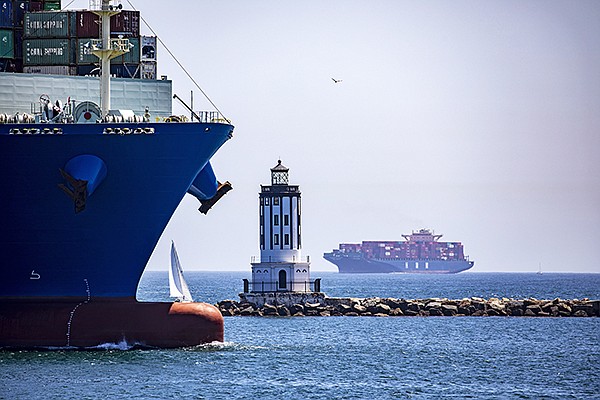IMPORT/EXPORT
U.S. Close To Making Trade Agreements After Year of Upheaval
After more than a year of headlines on trade wars, the Trump administration, the U.S. Congress and America’s trade partners wrapped up the year with statements and votes promising that trade deals are close.
On Dec. 19, the U.S. House of Representatives approved the United States–Mexico–Canada Agreement by a 385 to 41 vote. The USMCA deals will be sent to the Senate. It is forecast that the Senate will approve the deal in 2020. It was considered to be a replacement for the Bill Clinton-era NAFTA trade deal. President Trump campaigned on replacing NAFTA in 2016, but deal watchers say that USMCA is similar to NAFTA.
On Dec. 13, President Trump and representatives of the People’s Republic of China announced that they had reached an agreement over “Phase One” of a trade deal that would whittle down tariffs and require China to increase purchases of American agricultural products. Phase One would also add protections for intellectual property.
Retail trade groups applauded the moves toward securing trade deals, but the U.S.-China deal has not gone far enough, according to Rick Helfenbein, president and chief executive officer of the American Apparel & Footwear Association.
“The tariff relief included in the ‘Phase One’ deal is welcome and could be a sign that the end of the trade war may be in sight,” Helfenbein said. “However, while this is a step in the right direction, it means American businesses, American consumers and American workers are still being hammered at an unacceptably high level by tariffs imposed on U.S. imports from China and, in retaliation, by China’s imports from the U.S. The administration has imposed one of the largest consumer and manufacturing taxes in American history, most of which remains in place following this agreement. Rising costs are already working their way through supply chains, and they will still have a negative impact going into next year.”
The National Retail Federation gave a thumbs-up for the USMCA. “The USMCA takes many important steps to modernize the agreement to reflect today’s global and digital economy,” said Matthew Shay, the NRF’s president and chief executive officer. “This agreement could not come at a better time and provides certainty for U.S. retailers that rely on the North American market, including those that operate in Canada and Mexico. It also ensures American families can continue to have access to a wide range of high-quality products at prices they can afford.”
If approved, the USMCA’s new provisions would be implemented in the upcoming year, said Nicole Bivens Collinson, president, international trade and government relations, for Sandler, Travis & Rosenberg, P.A., a law firm focused on trade, customs and export law that has offices in locations including San Francisco, New York, Miami, Hong Kong and Shanghai.
There are strong indications that the agreement will benefit people manufacturing apparel in America, Bivens Collinson said. In order to qualify for the agreement’s protections and its duty-free treatment of goods, manufacturers will have to guarantee that a number of elements in clothing will have to be produced in the U.S., Mexico or Canada. The USMCA’s rules-of-origin provisions demand that parts of clothing sold such as elastomeric, or elastic-coated, yarns will have to be made in one of the countries participating in the treaty.
Changes from NAFTA also require elements to originate in North America, such as sewing thread, pocketing fabric, narrow elastic bands and coated fabric. Many of the changes are consistent with the apparel rules of origin for the Central American Free Trade Agreement, which was signed in 2004. The USMCA would apply those rules to areas covered by the agreement.
Apparel companies not in compliance with these provisions will be given ample time for change, Bivens Collinson said. “It gives sufficient time for supply chains to run through inventory and use what’s in them,” she said. “The effective date ranges from 12 months from implementation to 18 months, giving companies time to go through their inventory.”
The USMCA deal is forecasted to add $68.2 billion and 176,000 new jobs to the U.S. economy, according to a U.S. International Trade Commission study that was released earlier this year.
Robert Krieger, president of Krieger Worldwide, a Long Beach, Calif., customs broker, freight forwarder and third-party logistics provider, forecasted that the deal would help exporters, importers and those who work in shipping and warehousing.
With tariffs down, more goods are anticipated to flow through the ports of Long Beach and San Pedro as well as other seaports and airports around the West Coast. This will also result in increased business for companies who warehouse goods as many distribution centers are headquartered in the Inland Empire east of Los Angeles.
Krieger mentioned that importers in China and the U.S. will both benefit from lower tariffs in each other’s products. He also said that the deal will help small- and medium-sized businesses in California.
“Tariffs have been a real burden to these companies,” he said. “My opinion is that we are going in the right direction. I’m optimistic. But there could be hiccups.”






















